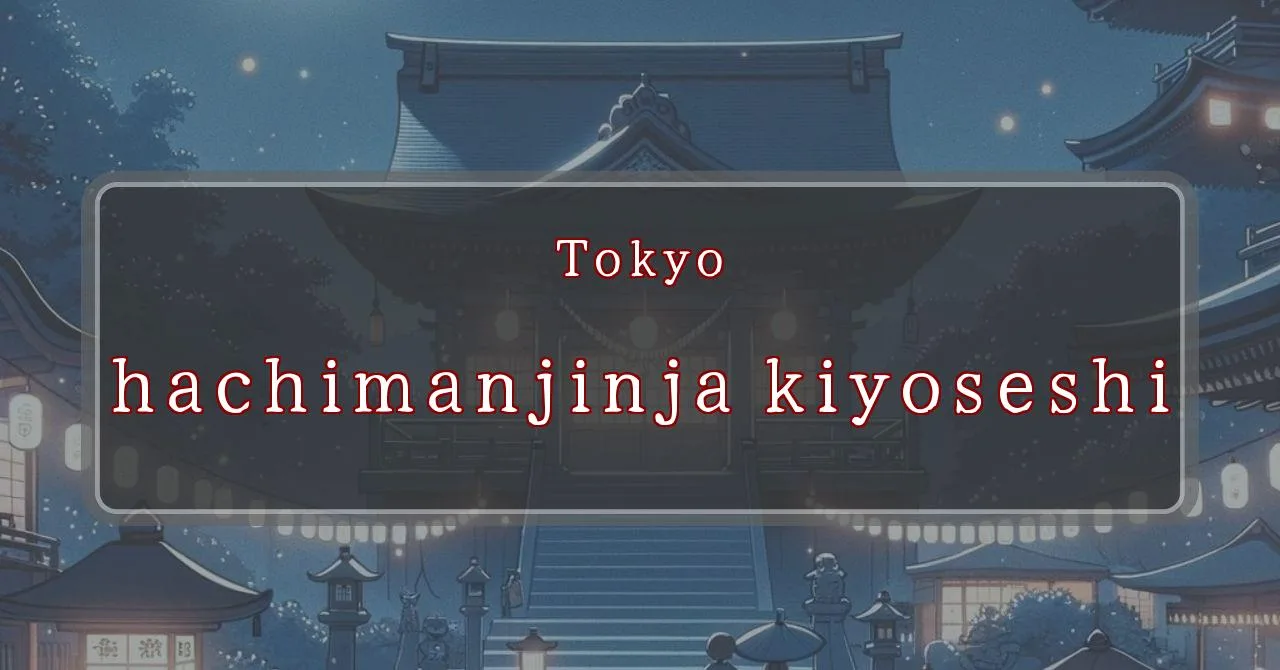Gleaming shrine, vibrant festival, divine experience
Basic Information
Discover the enchantment of Hachiman Shrine, a sacred site nestled in Kiyose City, Tokyo.
- Address: 2-515 Shimojyuku, Kiyose-shi, Tokyo
- Phone Number: 042-493-8585
- Access: A short walk from Kiyose Station on the Seibu Ikebukuro Line
- Festival Days: April 27th (Sat) and 28th (Sun), 2024
Main Events and Attractions of the Festival
Immerse yourself in the vibrant festivities and rich traditions of the Hachiman Shrine Festival in Kiyose City.
Mikoshi Procession
Witness the grandeur of the Mikoshi Procession, a highlight of the festival. The sacred mikoshi, a portable shrine, is carried through the streets by local residents, accompanied by lively music and traditional dance performances.
- Overview: A parade of the sacred mikoshi through the city streets
- Significance: Symbolizes the presence of the deity and brings blessings to the community
Shishimai Dance
Be captivated by the mesmerizing Shishimai Dance, a traditional lion dance performed by skilled dancers. The lion’s movements, accompanied by rhythmic drumming and chanting, are believed to ward off evil spirits and bring good fortune.
- Overview: A dynamic lion dance showcasing intricate choreography
- Significance: Symbolizes purification and protection from evil spirits
Bon Odori Dance
Join in the lively Bon Odori Dance, a traditional Japanese folk dance performed during the festival. Dancers of all ages gather in a circle, moving to the rhythm of traditional music, creating a joyous and communal atmosphere.
- Overview: A communal dance involving participants of all ages
- Significance: Celebrates the spirits of the ancestors and promotes community bonding
Blessings and Deities
Discover the divine blessings and deities revered at Hachiman Shrine.
- Overview: Hachiman Shrine is dedicated to the revered deity Hachiman, the god of war and guardian of warriors.
- Benefits: Worshippers pray for victory, success in battle, and protection from harm.
- Deities: The shrine also enshrines other deities, including Empress Jingu and Emperor Ojin, known for their military prowess and contributions to Japan’s history.
Origin and History
Unravel the rich history and origins of Hachiman Shrine.
- Overview: The shrine’s origins date back to the Heian period (794-1185), with its establishment attributed to the powerful Taira clan.
- Historical Significance: Hachiman Shrine has played a significant role in Japanese history, serving as a place of worship and reverence for samurai warriors and feudal lords.
- Cultural Heritage: The shrine’s architecture, artifacts, and traditions reflect centuries of Japanese cultural heritage and religious practices.
Tips and Notes for Visitors
Ensure a fulfilling and respectful visit to Hachiman Shrine.
- Overview: Familiarize yourself with proper etiquette and practical tips to enhance your experience at the shrine.
- Dress Code: Observe modest attire as a sign of respect for the sacred nature of the shrine.
- Etiquette: Follow customary practices such as bowing before the main shrine building and clapping twice before praying.
- Photography: Photography is generally permitted within the shrine grounds, but avoid using flash when taking pictures of the shrine buildings or deities.
Parking Information
Plan your visit to Hachiman Shrine with convenient parking options.
- Overview: Hachiman Shrine provides limited parking spaces for visitors.
- Availability: Parking spaces are available on a first-come, first-served basis.
- Fees: Parking fees may apply, so it’s advisable to carry cash or prepare for electronic payment.
- Alternative Options: Consider using public transportation or taxi services to reach the shrine, especially during peak seasons or events.
Popular Stalls and Food Carts in Recent Years
| Type of Stall | Description |
|---|---|
| Takoyaki | A staple at Japanese festivals. Characterized by a crispy outside and a creamy inside. |
| Jaga Butter | A simple yet popular snack of hot potatoes lavishly topped with melted butter. |
| Baby Castella | Small castella cakes, sweet and fluffy treats enjoyed by children and adults alike. |
| Grilled Ayu with Salt | Fresh ayu fish grilled whole with salt, a savory taste of Japanese summer. |
| Shaapin | A unique gourmet item influenced by foreign cuisine, with a chewy skin wrapping the filling. |
| Okonomiyaki | A Japanese grilled dish where you often choose your own ingredients for a personalized flavor. |
| Cotton Candy | A fluffy, sweet snack that’s extremely popular with children. |
| Chocolate Banana | A banana coated in chocolate, a fun and visually appealing dessert. |
| Kushiyaki | Various types of ingredients skewered and grilled, an easy-to-enjoy snack. |
| Yakisoba | Fried noodles mixed with a special sauce, a fast food favorite in Japan. |



